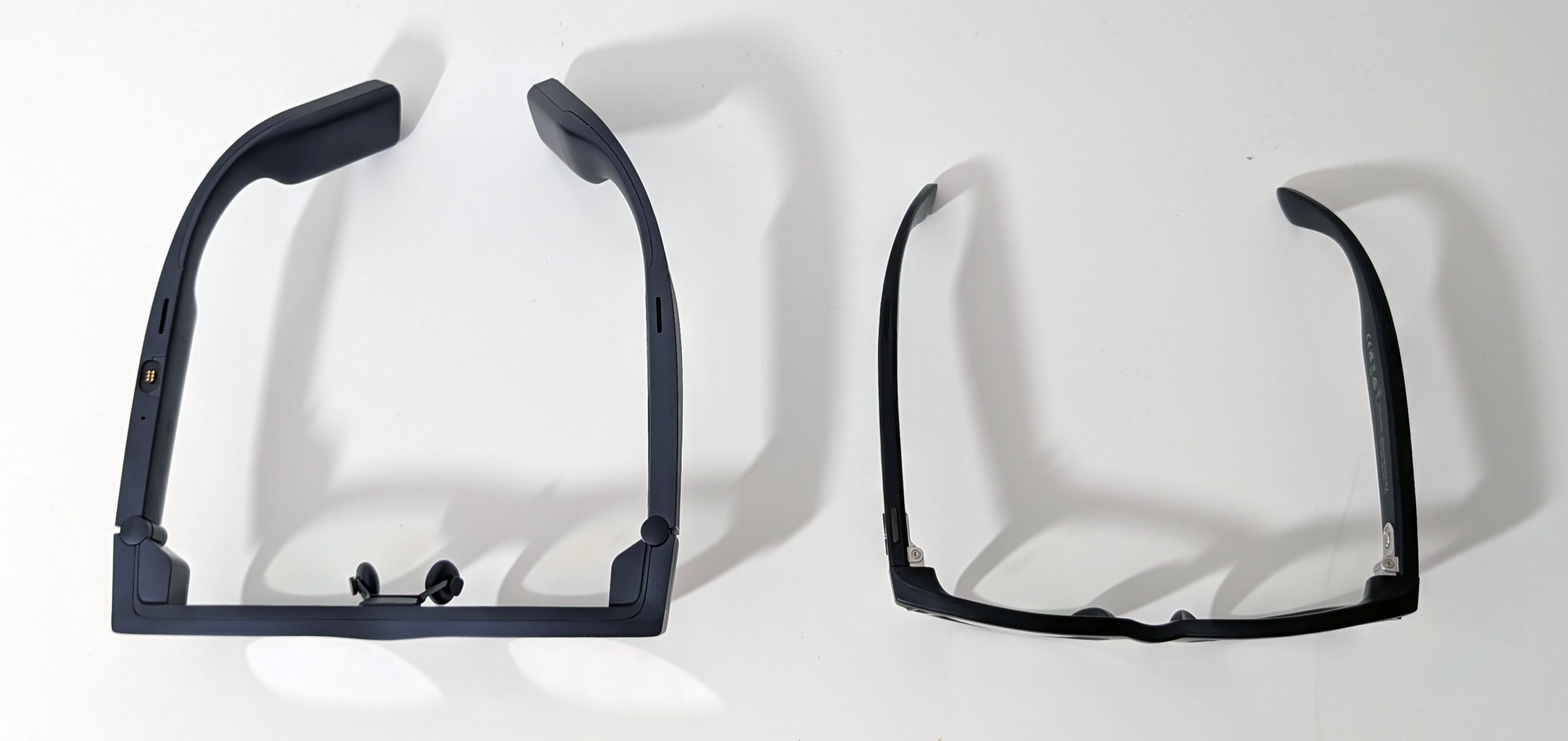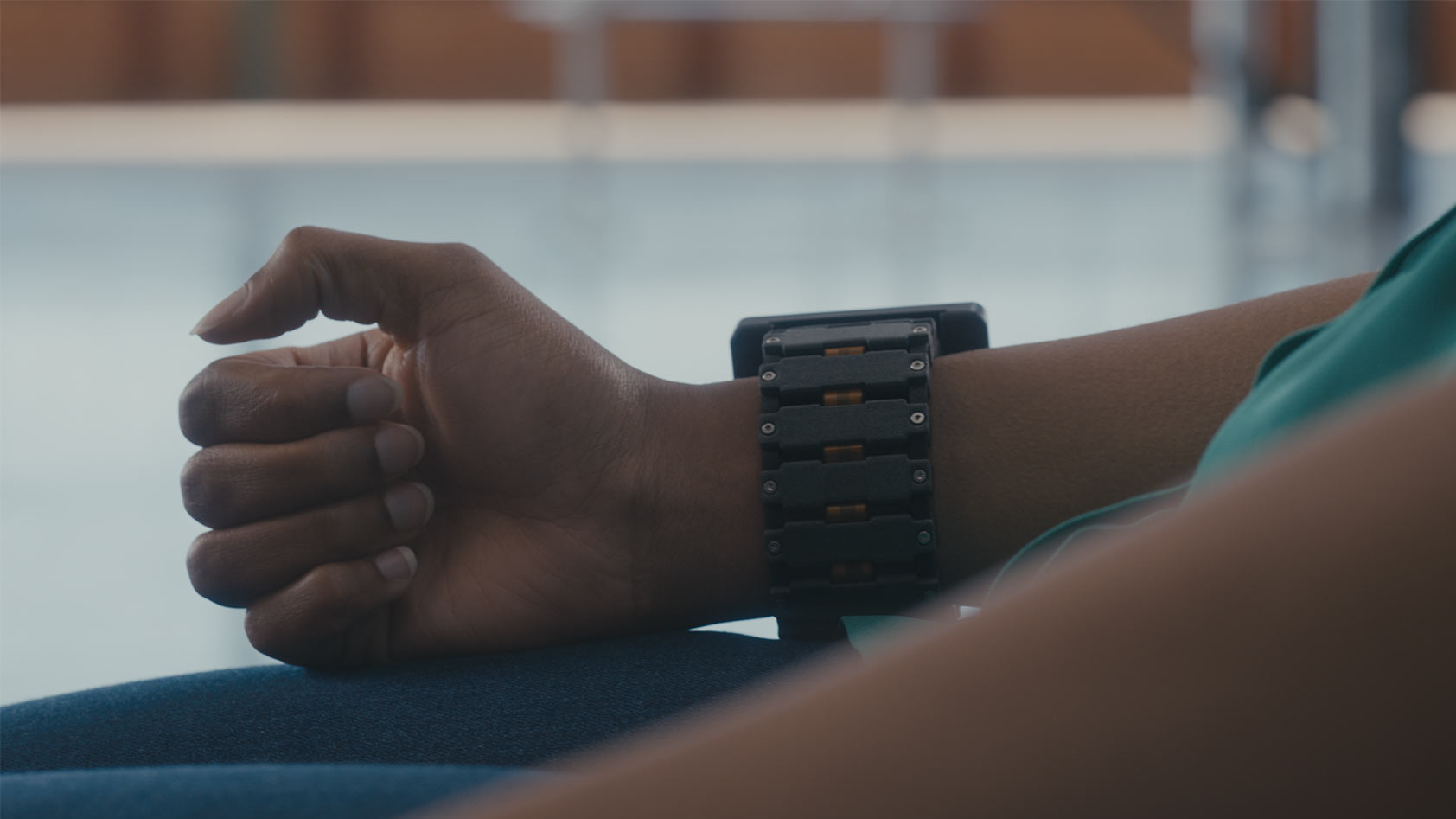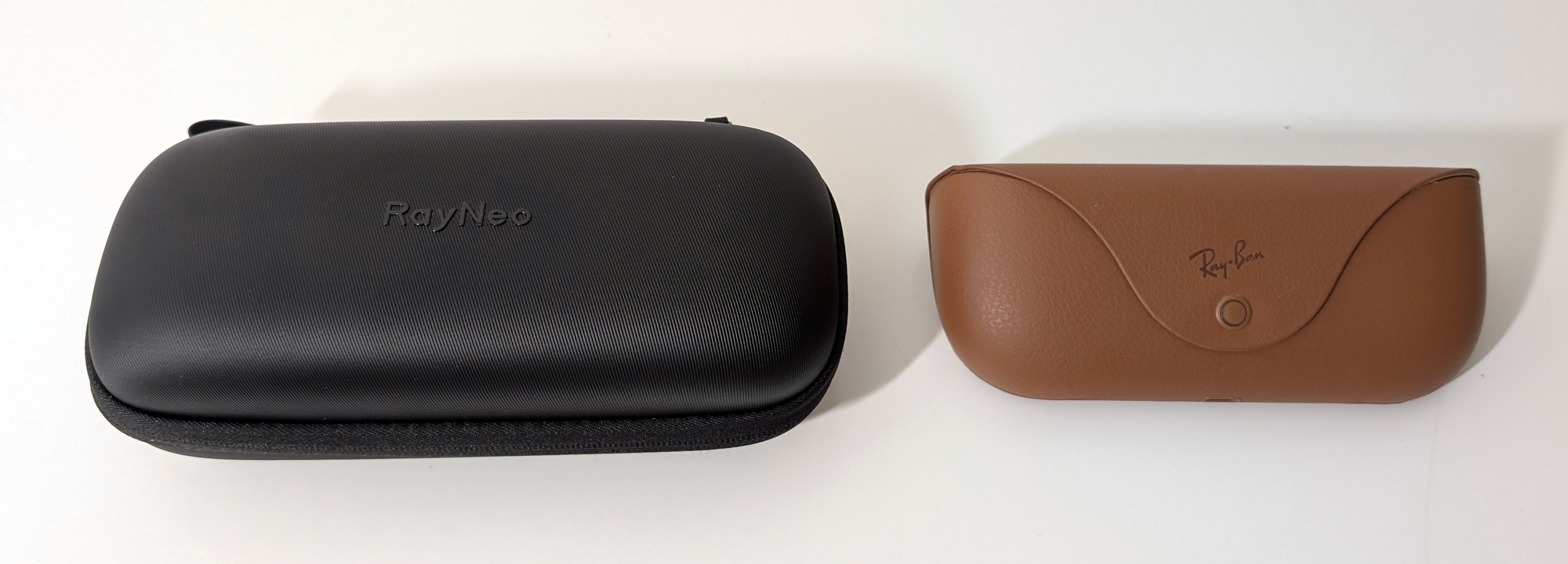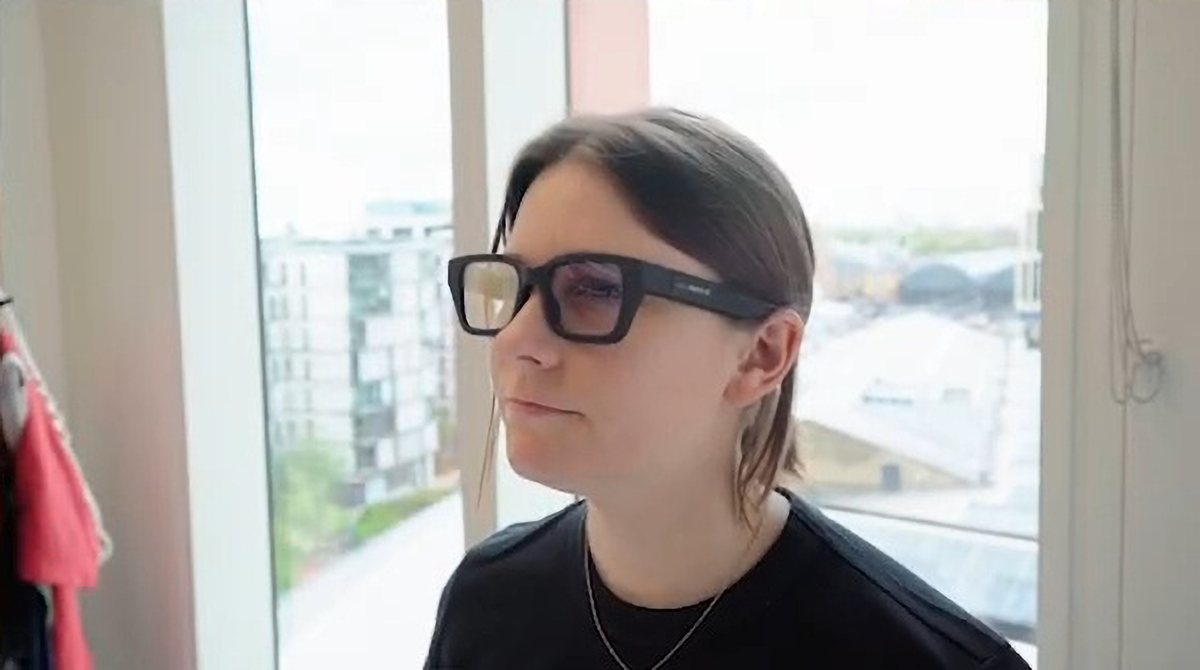RayNeo X2 is technically the primary standalone AR machine in true glasses type issue, a observe for the historical past books. However is it any good?
X2 began delivery to Indiegogo backers in Could, and is presently bought at $850. The machine technically achieves two firsts: not solely is it the primary standalone AR glasses, that means it does not require a separate compute machine or battery, nevertheless it’s additionally the primary AR machine with full-color microLED shows.
TCL Crowdfunding RayNeo X2, The First Standalone AR Glasses
TCL launched the crowdfunding marketing campaign for RayNeo X2, the primary standalone AR glasses and the primary with microLED shows.
RayNeo X2 has a full Snapdragon XR2 chipset on board, the identical utilized in Meta Quest 2, and the corporate claims the glasses are able to the sort of out-of-home use instances individuals have been envisioning for AR glasses for years now, together with out of doors navigation and realtime speech translation anchored to the particular person talking. Are any of those claims true?
Design & Consolation
RayNeo X2 is in true glasses type issue. In contrast to birdbath optics glasses resembling Xreal and its clones, they do not sit out out of your face.

That mentioned, they’re noticeably bigger and bulkier than common glasses and Ray-Ban Meta sensible glasses, pushing to the very limits of outside social acceptability and maybe, for many individuals, simply past.

They’re additionally heavier. I weighed my Ray-Ban Meta glasses at 50 grams, whereas RayNeo X2 weighs 120 grams.

However that is to not say RayNeo X2 is uncomfortable. It has thick, comfortable padding on the finish of its stems that act as a counterbalance, in addition to comfortable nostril padding. The arms are additionally manufactured from a softer feeling plastic than Ray-Ban Meta glasses.

General, I really discover them simply as snug, although I do discover the load extra. And naturally this is not a good comparability. The Ray-Ban Meta glasses require your telephone for a lot of their performance and lack any sort of show, whereas RayNeo X2 is totally standalone, bar the necessity in your telephone’s Wi-Fi.
MicroLED + Waveguide Optics
What permits RayNeo X2 to attain its true glasses type issue is using waveguides, the identical optical strategy Meta and Snap will probably use of their AR units, in addition to using microLED for its shows – a primary in a shopper product wherever close to this worth vary.
MicroLED shows are very environment friendly and really shiny, permitting RayNeo X2 to output 1000 nits regardless of its tiny battery, round 10 occasions as shiny as headsets like Quest 3 and Apple Imaginative and prescient Professional, and twice as shiny as micro-OLED birdbath glasses like Xreal. In observe, this meant I may nonetheless see RayNeo X2’s shows open air on a sunny day.
However the microLED and waveguides optical stack additionally comes with notable downsides.
Firstly, the sector of view is tiny, simply 25 levels. This cripples X2’s viability as an AR machine, as I will broaden on later, nevertheless it’s completely affordable for a HUD (heads-up show).
One other draw back on paper is that being the primary microLED shows, they’re very low decision, at 640×480 per eye. In observe although the low discipline of view means the angular decision right here is much like what you’d get in a Meta Quest 3 headset, ample for all of the use instances RayNeo affords.
The most important drawback with RayNeo’s optics is how they have an effect on your view of the world behind them. In principle, clear AR optics give you an ideal view of the actual world, freed from the low element, graininess, and distortion of passthrough blended actuality headsets. The issue is that in observe, X2’s waveguides scatter mild coming from the opposite facet too.
This seems as a big streak of fringed colours throughout your view when taking a look at a monitor, your telephone, or the overall course of the solar. And should you’re utilizing darkish mode on that display or telephone, you will see the white textual content smeared throughout the black background and have to take X2 off to learn it.
Software program & Options
So I’ve described RayNeo X2’s type issue, consolation, show, and optics. However what are you able to really do with it, and the way properly do these options work?
Non-Show Options
RayNeo X2 has a digital camera and audio system, so technically it might probably do every part Ray-Ban Meta glasses can. You should use it to take photographs and movies or take heed to music, podcasts, or audiobooks, and it has its personal AI assistant.
The speaker high quality is just about the identical as Ray-Ban Meta glasses, and has the identical benefit that you simply hear the actual world undistorted since nothing is touching or protecting your ears. It is appropriate for podcasts and audiobooks, and adequate for infrequent music listening however removed from the best way you’d wish to take heed to music ideally.
The digital camera high quality is a blended bag. It is panorama, so not superb for social media posts and sometimes cannot see objects you are holding, defeating the aim of a first-person seize resolution. It is also grainier than the digital camera on Ray-Ban Meta glasses and has worse publicity management, but in addition appears to have greater bitrate.
RayNeo additionally has its personal AI assistant. However there isn’t any solution to set off it with a phrase like “Hey Meta”. As an alternative, it’s a must to navigate to the app for it in the principle menu and await it to launch, throughout which you’ll’t use different apps. It additionally appears to be designed to behave extra like a personality than a impartial assistant, and makes use of the show to point out each your voice enter and the character’s outputs as textual content, in addition to listening to it by way of audio. It is much more frictionful and clunky than Meta’s resolution.
HUD Options
What RayNeo X2 affords that Ray-Ban Meta glasses cannot are options that depend upon having a show.
The obvious of those is exhibiting your telephone’s notifications. Whereas Meta AI can let you know that you simply acquired a brand new message from somebody, RayNeo X2 can present you in a pop-up. You possibly can select which apps you wish to present up, and you will hear a beep and see the preview in entrance of you. It is of comparable usefulness to a smartwatch, however with out the necessity to look down. I do want the HUD wasn’t straight within the middle of your view although. Ideally, some day with future {hardware}, it will be to the facet, above, under, or a nook (user-defined), so you might take a look at it if you would like whereas nonetheless having an unobstructed view of straight forward.
One other function is navigation. This is not the AR navigation dream of floating arrows pointing you to your vacation spot, although. As an alternative, you see turn-by-turn directions, a online game model mini map, and a set arrow telling you which of them solution to rotate. It is an attention-grabbing resolution however runs into the identical challenge because the notifications: it covers my view of the actual world an excessive amount of. That is why AR generally is a lot extra helpful than a HUD; it might probably place objects and UI the place you want them in house, not simply in a set place in your view.
The ultimate headline function enabled by the show is translation. I used to be impressed by this greater than every other software program on the machine. Choose the language you wish to translate to and from, then look straight at somebody’s face whereas they converse that language, and you will see subtitles beneath them in your language. This can be a true glimpse of a really completely different future. However the software program is so laggy and clunky that it stays a novelty for now.
App Connectivity
The most important challenge I’ve with RayNeo X2’s software program is how unreliable the connection is with the app. You want the app to view captured media, and to move by way of web while you’re not linked to Wi-Fi. Nevertheless it typically loses connection, and appears to have nice issue in re-establishing it.
Clunky Controls
Accessing all these options, from digital camera seize to navigation to translation, requires scrolling by way of a menu system utilizing a touchpad on the best facet of the glasses. You faucet to pick, swipe to scroll, and double-tap to return. And this simply is not an excellent expertise in any respect – it feels sluggish and irritating.
RayNeo X2 additionally features a ring you should utilize as a substitute, however that is much more irritating. The touchpad is tiny and unresponsive, and the ring is so thick and heavy that I would not wish to depart it on my finger.
Zuckerberg: Neural Wristband To Ship In ‘Subsequent Few Years’
Mark Zuckerberg says Meta’s finger-tracking neural wristband for AR/VR enter will ship “within the subsequent few years”. Clarification right here:

All of this highlights to me how enter is simply as a lot of a problem for the prospect of AR glasses as show and compute, and I now perceive Meta’s funding in its neural wristband challenge greater than ever. Sensible AR glasses would require a very new strategy to enter; touchpads simply aren’t as much as the duty.
Augmented Actuality
Whereas every part I’ve mentioned to date takes place in a head-locked HUD, RayNeo X2 is technically able to 6DoF positionally tracked augmented actuality. The issue is, it is horrible at it.
The tiny discipline of view means digital objects are invisible except you are wanting proper at them, and thus arduous to search out and straightforward to utterly lose. And the standard of the positional monitoring is the worst I’ve seen in any machine I’ve used up to now decade.
Maybe it is the truth that a single RGB digital camera is used, or how low RayNeo wanted to clock the XR2 chipset to get it working in glasses. Perhaps it is simply the standard of RayNeo’s monitoring software program. Whatever the trigger, RayNeo X2 is an AR machine technically solely. In actuality, it isn’t a sensible method to make use of AR – it is laughably unhealthy at it.
It is irritating as a result of it provides you a tiny glimpse of the magic of AR by way of clear optics, bar the smearing points I highlighted earlier, however not sufficient to make it one thing you’d actually wish to use greater than as soon as.
Battery Life & Charging
My favourite factor concerning the Ray-Ban Meta glasses is that they cost in an included case, like AirPods, which gives round 32 hours of battery life and itself expenses by way of USB-C.
My least favourite factor about RayNeo X2 is that they don’t. A case is included, positive, nevertheless it does not have a battery in it, nor a charging port.

To cost RayNeo X2 you might want to use the included proprietary magnetic cable, which has a USB-A finish. And the case does not actually have a slot for this cable, so it’s a must to awkwardly jam it in.
When it comes to battery life, I discovered X2 lasts for 1-2 hours if always utilizing the show and options, or round 5 hours if I am utilizing it only for audio and occasional digital camera seize.
A significant drawback is that they appear to empty vital energy on standby. Until you explicitly flip them off, RayNeo X2 will likely be out of battery should you simply set them down. Hopefully this may be mounted in a future software program replace.
Conclusions
From a {hardware} perspective, RayNeo X2 is about nearly as good as will be achieved with clear optics in a standalone glasses type issue for underneath $1000 in 2024 and offers a tiny glimpse of the way forward for computing, although I want its charging resolution was extra elegant.
However lackluster software program and clunky controls severely restrict its usefulness, and its augmented actuality is laughably unhealthy. Until you are an early adopter eager to strive HUD glasses earlier than firms like Meta and Google provide their very own, I do not advocate shopping for RayNeo X2.
Meta’s HUD Glasses Reportedly Gained’t Be Ray-Ban Branded
Meta’s HUD glasses, coming subsequent 12 months, reportedly received’t be Ray-Ban branded or styled after EssilorLuxottica “balked” on the thickness of the body.

Google Teases AI Sensible Glasses With A HUD At I/O 2024
Google teased multimodal AI sensible glasses with a HUD at I/O 2024.

